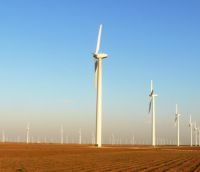The state of Texas is the U.S. leader in wind energy production by a wide margin.
Texas produces more wind power than any other U.S. state, accounting for roughly 25–30% of all U.S. wind generation.
As of 2025, Texas has over 40 gigawatts (GW) of installed wind capacity — enough to power more than 10 million homes.
The state’s large, open plains (especially in West Texas, the Panhandle, and the Gulf Coast) make it ideal for large-scale wind farms.
Top wind regions in Texas are:
West Texas & Panhandle
- Flat terrain and strong, consistent winds.
- Home to some of the largest wind farms in the world.
South Texas & the Gulf Coast
- Steady coastal winds; several offshore and near-shore projects are in development.
Central Texas
- Growing number of smaller wind farms and hybrid projects (wind + solar).
Wind power impact on economy:
Tens of thousands of jobs in construction, maintenance, and manufacturing.
Wind energy industry brings billions in investment to rural communities.
Landowners often receive lease payments for hosting turbines (commonly $5,000–10,000 per turbine per year).
Wind power integration with the grid:
Managed primarily by ERCOT (Electric Reliability Council of Texas).
Wind can account for up to 40–60% of the state’s electricity on very windy days.
Texas built over 3,600 miles of transmission lines (CREZ lines – Competitive Renewable Energy Zones) to move wind power from remote areas to cities like Dallas, Houston, and Austin.
The obstacles for even bigger development include:
Intermittency: Wind output fluctuates, requiring grid flexibility and energy storage.
Transmission constraints: At times, there’s more wind power than the grid can carry.
Interesting future trends:
Hybrid projects: Increasingly, wind farms are being paired with solar and battery storage.
Offshore wind: The Gulf of Mexico holds major potential; early leasing activity is underway.
